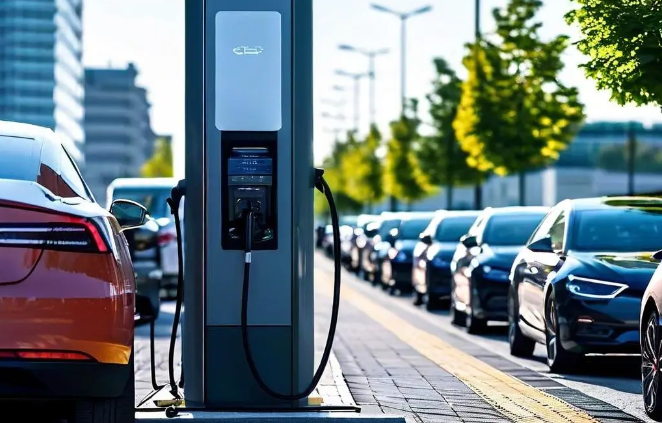The Electric Vehicle Charging Station Power Distribution System is one of the core components of EV charging infrastructure. It is responsible for receiving power from the grid and safely and efficiently transmitting it to charging stations to provide charging services for electric vehicles. Here are the main functions of the EV charging station power distribution system:

Power Conversion and Regulation: The power distribution system must have the capability to convert AC power supplied by the grid into DC power suitable for charging electric vehicle batteries. Additionally, it needs to regulate the output voltage and current according to the specific requirements of electric vehicles to ensure a fast and safe charging process.
Overload Protection: To avoid equipment damage or safety accidents caused by overload, the power distribution system incorporates an overload protection mechanism. When the detected current exceeds the set threshold, the system automatically cuts off the power supply to prevent the failure from escalating.
Short-Circuit Protection: Short circuits are one of the most common faults in electrical systems. The power distribution system must be equipped with effective short-circuit protection measures. In the event of a short circuit, the circuit is immediately disconnected to ensure the safety of personnel and equipment.
Leakage Detection: The power distribution system is equipped with leakage detection devices to monitor whether there is any current leakage to the ground. If leakage is detected, the system will respond quickly by cutting off the power supply to avoid electric shock accidents.
Remote Monitoring and Management: Modern EV charging station power distribution systems typically support remote monitoring functions. Operators can view the working status, power usage, and other information of various charging stations in real-time through the internet, enabling timely fault diagnosis and maintenance scheduling.
Intelligent Scheduling: To improve energy utilization efficiency, the power distribution system can also integrate an intelligent scheduling module. It automatically adjusts charging strategies based on factors such as grid load conditions and electricity price fluctuations, for example, charging electric vehicles during nights when electricity prices are lower.
Compatibility Design: Considering the variety of electric vehicle types and charging interface standards on the market, the EV charging station power distribution system should have good compatibility to accommodate different brands and models of electric vehicles.
Data Recording and Analysis: The power distribution system can record various parameters during the charging process, including but not limited to charging time, power consumption, and cost. This provides users with detailed billing information and helps operators optimize operational strategies.
The EV charging station power distribution system serves as a bridge between the grid and electric vehicles, and is a critical facility for ensuring charging safety and improving charging efficiency.




